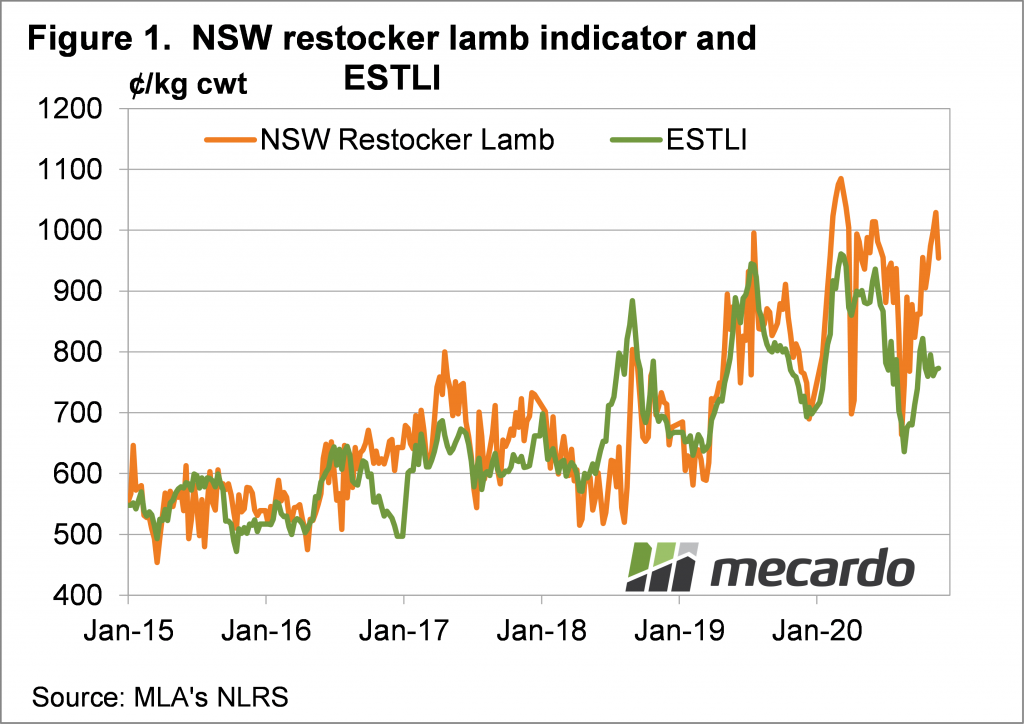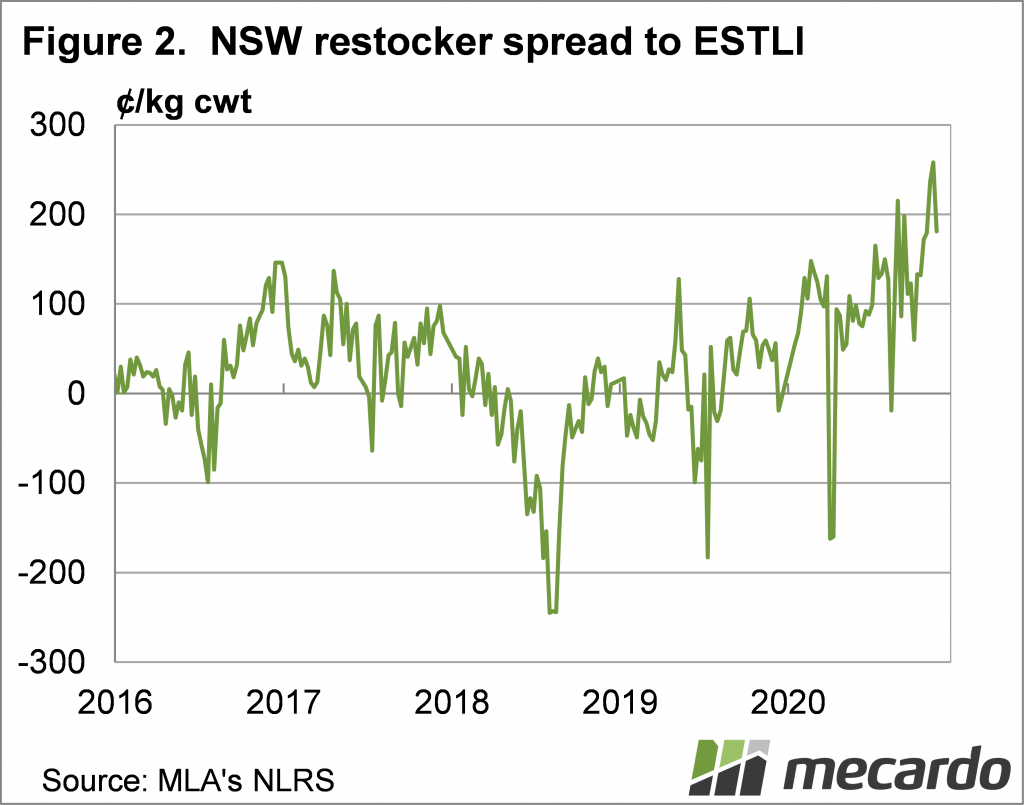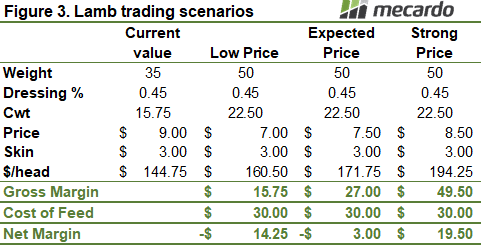Restocker lamb prices are booming, and its little wonder given the very expensive alternatives for eating excess feed. Last week saw the NSW Restocker Lamb Indicator premium to trade lambs hit a new record, and it prompted a look at trading margins.
Figure 1 shows the NSW Restocker Indicator was last week over the magic $10 level in an extremely hot market. Figure 1 also shows that while historically strong, trade lamb prices are lagging well behind their lighter cousins.
The spread, or restocker lamb premium to the ESTLI hit a new record a fortnight ago. Figure 2 shows the restocker premium was at 258¢, or 33%, two weeks ago, and despite falling was still at 23% last week. We can see in figure 2 the restocker premium was easily a new record. In fact, prior to 2020 the NSW Restocker Indicator had rarely moved far above 100¢.
In Victoria the rush of spring lambs hitting the market has kept somewhat of a lid on restocker values. The Vic Restocker Indicator last week sat at 865¢/kg cwt, almost 100¢ behind its NSW counterpart. The difference is a bit larger than the freight cost, so there is some opportunity to truck Victorian lambs north, and this is showing through higher prices up in online sales.
We can see in figure 3 why restocker lamb supply is tight and demand is strong, especially from those who have green feed. Lamb producers who have the option of selling as stores, or carrying through on grass, are taking the latter option. At current trade lamb prices of around 770¢/kg cwt (the expected price) there is a $30 margin in carrying lambs through to trade lambs.
If grass is considered to be free, the return on carrying lambs will be 20% if trade lamb prices remain steady. In the current environment where cattle trading returns are low, this sort of return is very good. If lambs have to be fed it is a different story. Trade lamb prices will need to rise above 820¢/kg cwt to turn a reasonable profit on feeding lambs.
What does it mean?
Grass fever is driving restocker lamb markets, and forecasts of strong La Niña induced rainfall are helping. For producers with light lambs running out of feed, the market is very good, as selling is likely to be a better option than grain feeding. There is also something in it for those buying light lambs to put out onto grass. If prices rise returns will be very good. If prices fall, values will have to go back to 650¢ before lambs start losing money.
Have any questions or comments?
Key Points
- A fortnight ago restocker lambs in NSW rallied above $10 and remain close to record premiums to the ESTLI.
- Restocker lambs are cheaper in the south, but remain historically strong.
- There are good margins in growing out lambs, but if feeding is required there is not much left.
Click on figure to expand
Click on figure to expand
Click on figure to expand
Data sources: MLA, Mecardo.













